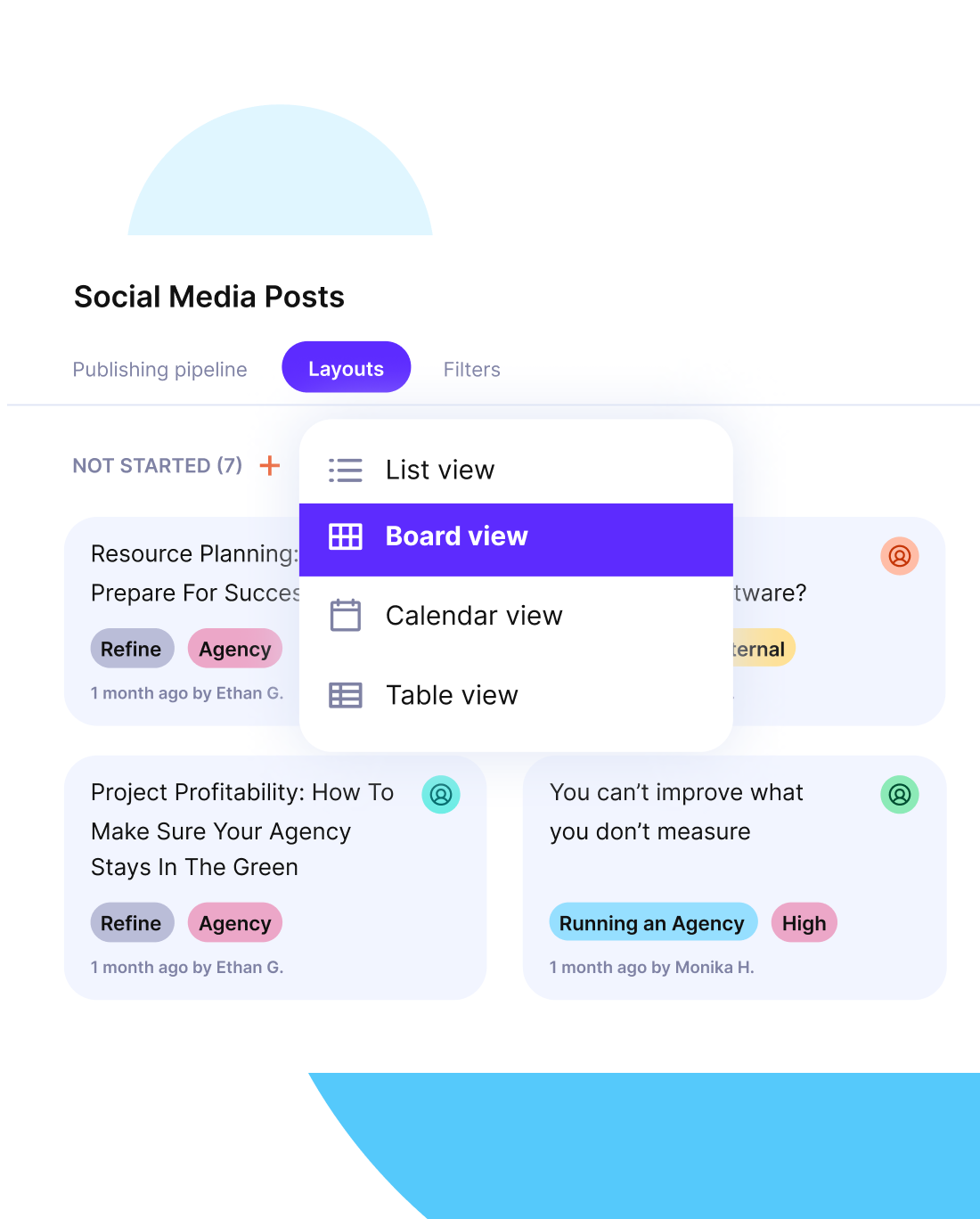What Is Stakeholder Engagement – Best Practices Guide 2026
Getting stakeholder engagement right on big initiatives can be one of the most challenging parts of project management.
By the end of the article, you’ll learn how to shift from one-way communication to real collaboration.
We’ll also walk you through the engagement process in practical steps, share the best practices, and talk about the tools that will help you manage engagement better.
Key Takeaways
- Stakeholder engagement is about active collaboration, and not just updates or approvals.
- There are different types of project stakeholders based on how much they care and how much decision-making power they have.
- Engagement requires a structured process: identifying, classifying, planning, interacting, and refining.
- Having a stakeholder engagement plan in 2026 is mandatory beacuse the level (and quality) of collaboration directly affects your strategic outcomes, risk exposure, and credibility.
What Is Stakeholder Engagement?
Stakeholder engagement is the structured process of working with people who can influence (or are affected by) your project or organization. Engaging with the stakeholders means involving the right people in the right way at the right time, sometimes engaging through contractual frameworks to clearly define roles and responsibilities.
Stakeholder communication is much more than sending updates or gathering approvals for project plans. In order for this dynamic relationship to work, project managers need to build trust, create real participation opportunities, and align expectations early.
What Is a Stakeholder?
A stakeholder is anyone impacted by what your organization does, or who has the power to impact your project’s results. These project stakeholders can be internal people like employees and executives, or external groups like customers, regulators, partners, or community members.
To make stakeholder engagement work, it helps to group them early on into:
- Internal stakeholders: your team, management, and board.
- External stakeholders: clients, vendors, agencies, government bodies.
- Vital stakeholders: people with high influence or high interest, or sometimes both.
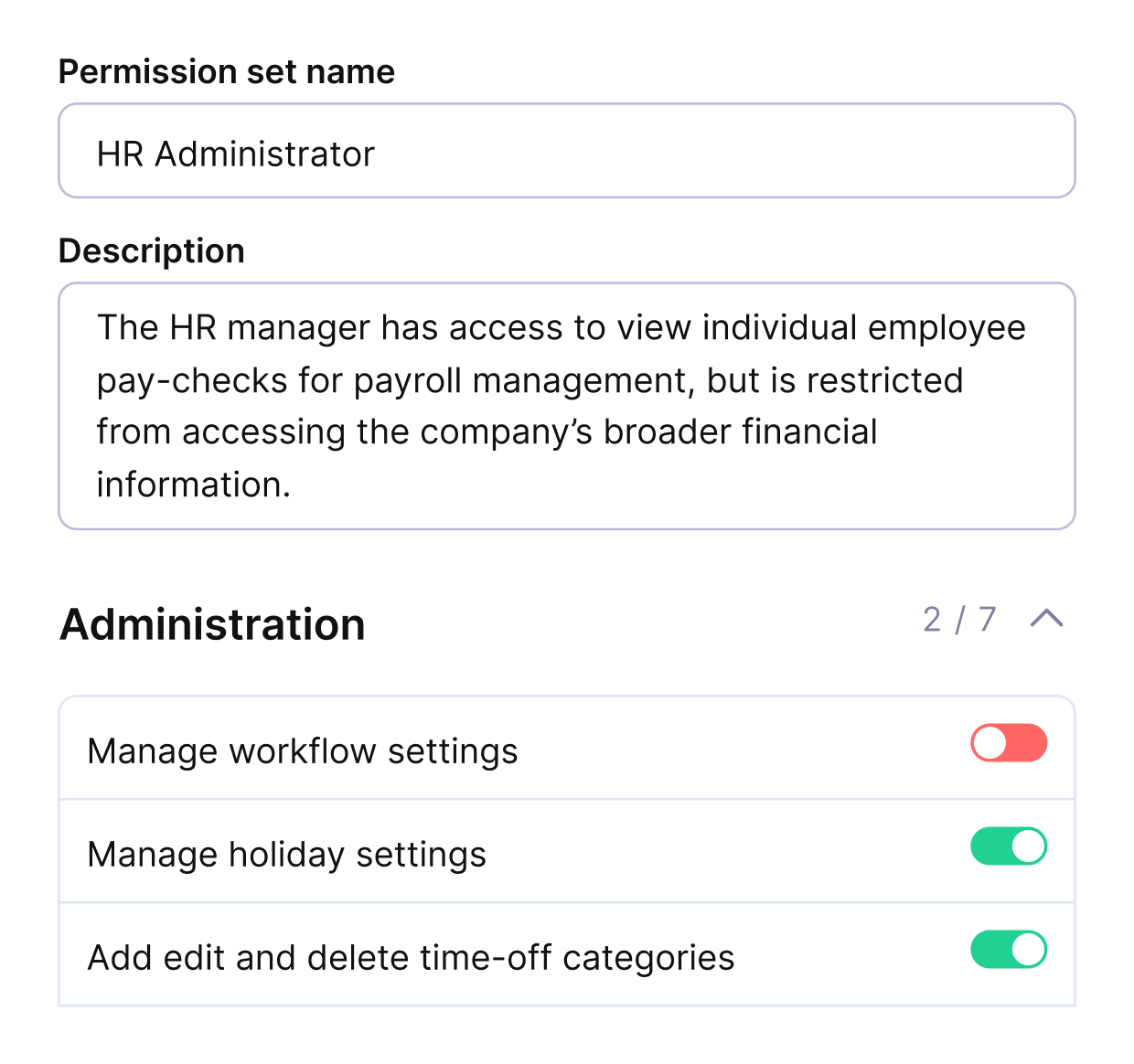
Add external stakeholders as guest users in Productive free of charge.
Differences Between Stakeholder Management and Engagement
Stakeholder engagement is about relationships. Stakeholder management is about control. When you manage stakeholders without engaging them, you often get friction. When you engage them properly, you get support.
| Category | Management | Engagement |
|---|---|---|
| Approach | Directive, top-down | Collaborative, inclusive |
| Communication | One-way updates | Two-way conversations |
| Primary Goal | Alignment and compliance | Shared ownership |
| Result | Controlled input | Informed, invested outcomes |
What Makes Engaging With Stakeholders Important?
Engaging stakeholders is important because it improves project outcomes, builds trust, and helps organizations anticipate risks before they escalate. Without it, well-planned projects can run into delays, rework, or a bad reputation.
When done well, engagement helps you:
- Align decisions with real-world needs
- Reduce resistance to change
- Spot problems before they cost time or money
- Build long-term credibility with partners and communities
Long-Term Value Creation and New Opportunities for Healthier Relationships
In complex enterprise environments or long-term programs, regular engagement helps teams surface issues early, stay aligned with stakeholder expectations, and avoid late-stage surprises.
Some organizations treat stakeholder engagement as a checkbox. Others make it a consistent part of how they operate. There’s a good reason behind that.
Consistent engagement creates:
- Innovation opportunities: Stakeholders see blind spots and suggest fresh approaches.
- Credibility: Transparent processes earn community and partner trust (your “social license”).
- Long-term alignment: Stakeholders become allies, not just observers.
What Is the Stakeholder Engagement Process?
The stakeholder engagement process is a five-step approach to identifying, planning, and improving how you collaborate with people who influence your work.
Since each step builds on the last, in the next sections, we’ll give you a clear and actionable breakdown with how-to advice.
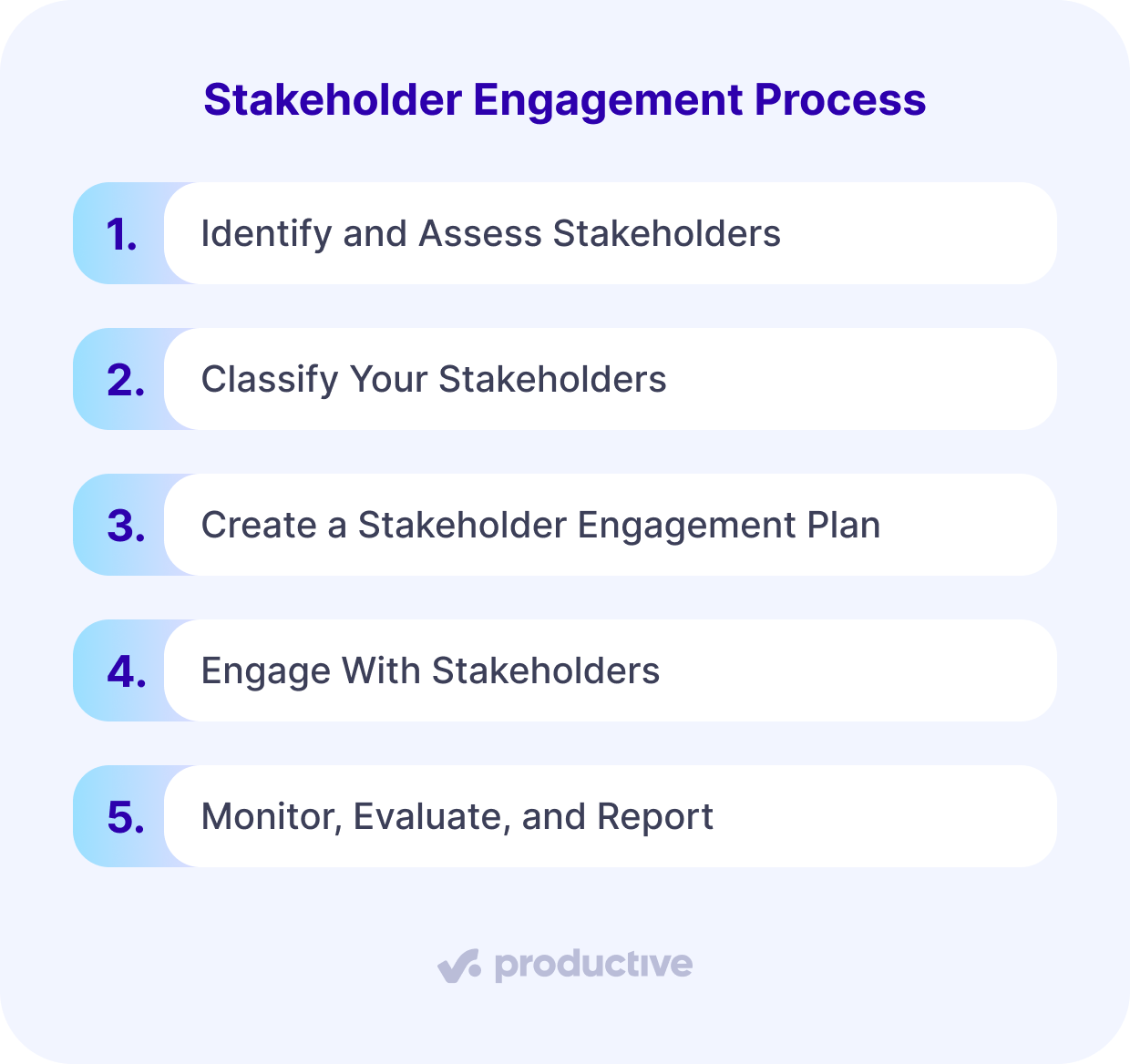
Step 1: Identify and Assess
Start with a stakeholder analysis. Your goal here is to make a key stakeholder list using your project scope, team composition, and any external dependencies. Review documentation, ask your team who might be impacted, and cross-check against typical categories:
- Internal stakeholders (e.g., execs, teams, department heads)
- External stakeholders (e.g., clients, regulators, vendors)
- Community or industry groups
Next, assign every meaningful stakeholder a score or label for:
- Influence: How much power do they have over project success?
- Interest: How affected are they by the project’s outcome?
Use this information to prioritize who should be actively engaged, who needs updates, and who just needs to be monitored.
Engage, report and collaborate with stakeholders in Productive
Five Levels of Engagement
Once you know who your stakeholders are, place each one into one of the five levels based on their influence and interest.
Use this tiered model:
- Inform: Use for stakeholders with low interest and low influence. Keep them updated through reports or dashboards, but don’t require active participation.
- Consult: Use for stakeholders with high interest but limited influence. Send them surveys or schedule feedback sessions to gather their input.
- Involve: Use for stakeholders with moderate to high influence and moderate interest. Include them in workshops or review sessions where they can help shape solutions.
- Collaborate: Use for stakeholders with high influence and high interest. Invite them into planning meetings and give them a role in making decisions.
- Empower: Use for key decision-makers or project sponsors. Let them take ownership over major aspects of the project or approve final decisions.
Stakeholder Influence and Interest Grid
To prioritize stakeholders, use a 2×2 grid like here to map their level of influence against their level of interest. This stakeholder map will help you decide how much attention and effort to dedicate to each group.
The process is pretty straightforward. You start by assigning each person a position on this grid. Then match your communication approach based on their quadrant. This approach helps you focus time and resources where they’ll have the most impact.
| Influence \ Interest | Low Interest | High Interest |
|---|---|---|
| High Influence | Keep informed. Provide concise updates at key milestones. Don’t overwhelm them with too much detail. | Engage closely. Include in decision-making meetings and provide regular, tailored updates. |
| Low Influence | Monitor with minimal updates. Include in summary reports or newsletters. | Involve occasionally. Invite to review sessions or feedback rounds for relevant phases. |
Step 2: Classify Every Stakeholder Into Influence Groups
Classifying the affected stakeholders makes it easier to manage engaging them at scale. Here, you should use the following categories to group them and define their level of involvement.
- Primary stakeholders: People who are directly affected by your project outcomes, such as clients, users, or frontline staff. These persons should be involved early and often, especially in the planning and review stages.
- Secondary stakeholders: Individuals or departments indirectly affected, like finance or IT support. Keep them informed and invite them into conversations when decisions may impact their workflows.
- Key stakeholders: People with significant influence, like executives or legal. Collaborate with them during strategic moments and make sure they’re consulted before major approvals.
Assigning each stakeholder to a category helps you build a targeted engagement plan that ensures no group is missed or over-engaged. This includes engaging with clients as stakeholders to ensure their perspectives shape the project direction. When you’re done with grouping, add them in the stakeholder register.
Step 3: Create a Stakeholder Engagement Plan
Your sengagement plan is like a playbook. First, you should list out each person of influence and what they need to know. Then define how and when they’ll hear from you, and how you’ll handle their input.
Here’s what to include:
- Stakeholder Mapping: Place each person on the influence/interest grid to determine communication priority.
- Stakeholder Engagement Goals: Outline what success looks like for each stakeholder (e.g., support, approval, feedback).
- Channels: Pick methods that match their preferences, such as Slack for internal teams or pre-made report templates for execs.
- Cadence: Set a realistic schedule for updates or check-ins based on project phases.
- Feedback loops: Decide how you’ll collect and act on input, and who will be responsible for following up.
Tailor Your Communication Approach
Use your plan to define exactly how you’ll communicate with the different stakeholder groups. Assign a specific channel, frequency, and tone based on their needs and preferences.
Here’s an example you can adapt to your project:
| Stakeholder Type | Channel | Frequency | Tone |
|---|---|---|---|
| Internal PMs | Slack/email | Weekly | Informal/casual |
| Executive sponsor | Slide deck | Monthly | Concise/formal |
| Regulatory agency | Written report | Quarterly | Factual/compliant |
Tailor this table for your context, and share it with your project team so everyone knows how and when each group should be contacted.
In case you need extra advice here, head over to our project communication plan guide, which also includes reusable templates that you can copy and adapt to your needs.
How Do You Engage with Stakeholders?
You engage with stakeholders by creating structured opportunities for them to participate, share input, and shape project outcomes through ongoing two-way communication.
The steps we’ve covered so far were about setting the foundation. The next steps in this guide will show you how to initiate stakeholder engagement with real conversations, structured formats, and intentional stakeholder feedback loops.
Step 4: Engage with Each Stakeholder
One-off meetings aren’t engagement; initiatives like workshops, surveys, and Q&As are. Now that you’ve defined your plan, it’s time to put it into action by creating real opportunities for collaboration and cultivating a relationship.
Here’s what you can do to engage with stakeholders:
- Workshops: Bring stakeholders into problem-solving sessions to shape solutions together. Use them at the beginning of major project phases or when validating a proposed direction.
- Surveys: Use short, focused surveys after milestones or decisions. This gives you measurable input from larger groups without slowing things down.
- 1:1s and small group sessions: Schedule these when you need to understand specific concerns or unpack sensitive topics that might not come out in public settings.
- Town halls or Q&As: Run these during key transitions or updates. They’re good for transparency and letting everyone raise questions in real time.
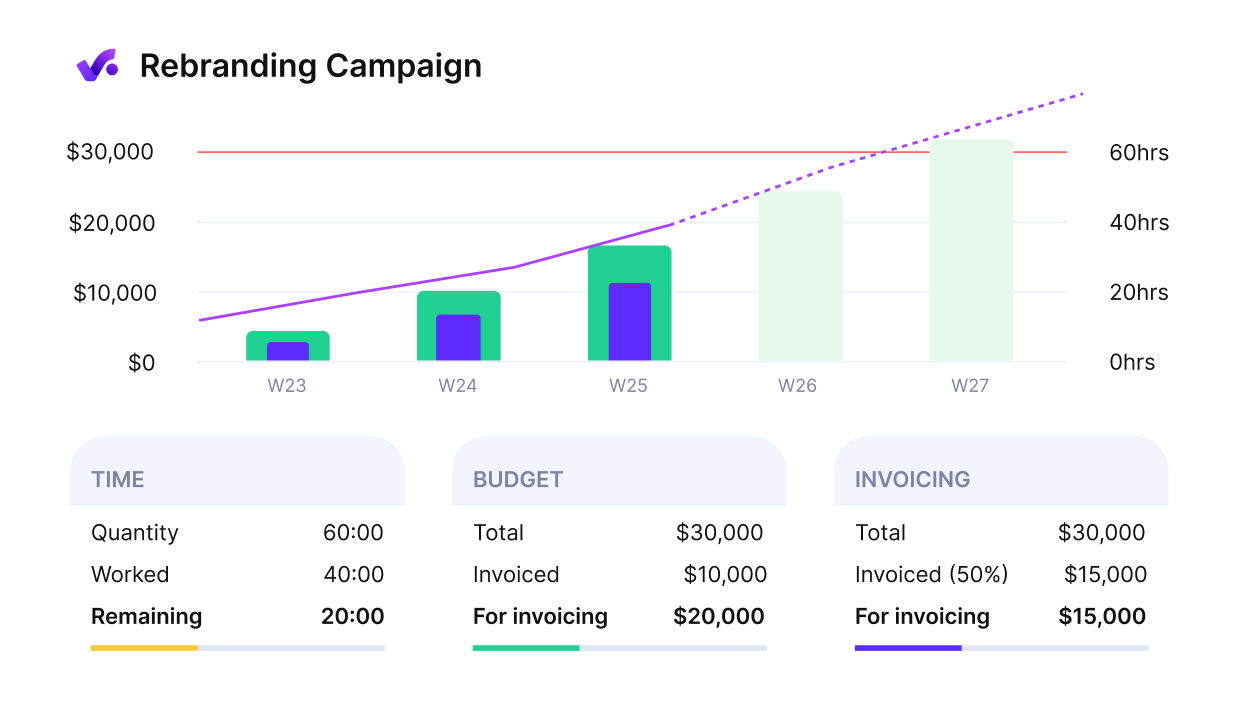
Productive pulls out the key data on project progress, budgets, and utilization that you can easily share with your stakeholders.
Step 5: Monitor, Evaluate, and Report
You monitor and evaluate engagement by tracking participation, collecting feedback, and measuring how input affects project outcomes. Great engagement won’t stay great if you don’t adjust it over time.
Stakeholders usually lose interest when their input feels ignored or when communication falls off mid-project.
| What to Track | Why it matters |
|---|---|
| Participation rates | Shows how actively people are engaging |
| Quality of feedback | Helps you assess interest |
| Sentiment over time | Flags potential resistance or confusion |
| Impact of feedback on decisions | Builds trust and shows input matters |
You can include this data in project updates, retrospectives, or even client reports. These metrics are super important because they build transparency. Tracking them also helps everyone involved to learn what’s working.
What Are the Best Practices for Engaging Stakeholders?
The best practices for engaging stakeholders are building trust through transparency, tracking performance, listening actively, and adjusting your engagement strategy based on feedback.
These practices are actually habits that lead to better projects, better relationships, and fewer surprises. Below, we’ll talk about the core principles and tracking key metrics.

Principles of Effective Engagement
Effective engagement is grounded in three core principles: transparency, genuine participation, and inclusivity.
Here’s why and how you should use these principles:
- Transparency: Show your how decisions are made and who is responsible. Share timelines, explain constraints, and be upfront about what’s fixed versus flexible.
- Genuine participation: Don’t ask for feedback unless there’s a clear path for incorporating it. Summarize what you’ve heard and show what changes were made as a result.
- Inclusivity: Engage stakeholders who might be impacted but aren’t usually consulted, and make it easy for them to participate through the right formats or languages.
Track Engagement Metrics
These metrics help you stay objective about what’s working (and what’s not). Do your best to keep an eye on them, and adjust accordingly.
Tools like stakeholder registers, CRMs, or project management platforms can help automate this tracking and reporting process. Remember to keep the data useful and not overwhelming.
You should track things like:
- Frequency and timing of communication: Track how often stakeholders are being contacted and whether those touchpoints align with the project timeline or expectations.
- Stakeholder satisfaction: Use pulse surveys or feedback forms after key interactions to assess if the important persons feel heard and supported.
- Participation rates: Measure how consistently stakeholders attend meetings, respond to surveys, or join workshops.
- Feedback-to-decision ratio: Track how much input actually leads to changes or is reflected in final decisions.
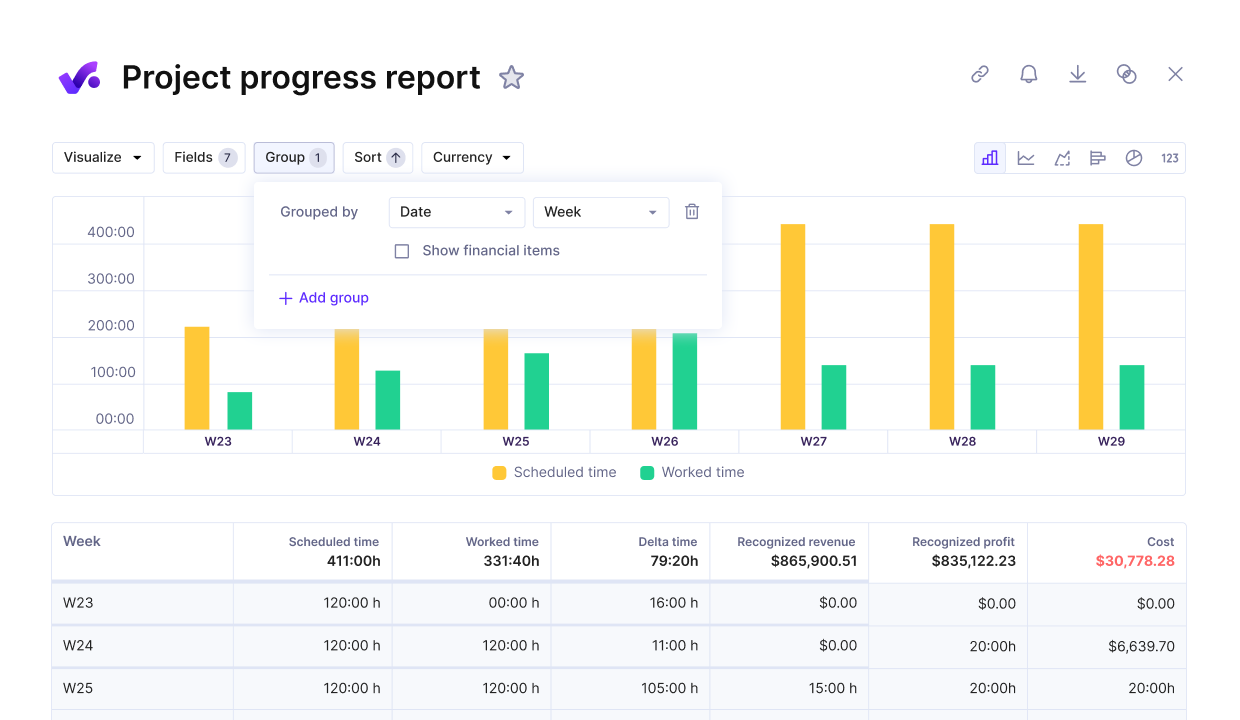
Track project progress with Productive’s dashboards or pre-made templates.
What Tools and Templates Support Better Engagement?
The tools and templates that support stakeholder engagement are stakeholder involvement plans, contact registers, mapping frameworks, survey tools, and evaluation checklists. All of them make it easier to align your project team, maintain accountability, and adapt when project dynamics change.
We’ve included a free template and more context below.
Free Engagement Plan Template
By far, you already know that a strong plan helps you translate strategy into real, day-to-day action.
Your plans should include the following:
- Stakeholder matrix: Sorted by influence and interest
- Engagement goals: What you want (measurable goals) from each person
- Communication tactics: Channels, tone, and how often you send updates
- Feedback process: How will the input be gathered and used
- Tracking section: Notes, outcomes, follow-up actions
Here’s a quick example checklist to get started:
| Section | Description |
|---|---|
| Stakeholder Matrix | List of stakeholders plotted by influence and interest |
| Engagement Goals | What you need from each group (e.g. support, input, approval) |
| Communication Methods | How you’ll reach each group (e.g., email, meetings, reports, Productive reports, etc.) |
| Frequency & Cadence | When and how often communication will happen (e.g., every second Friday at 10:00 AM) |
| Feedback Mechanisms | How feedback will be gathered and who is responsible for tracking it (e.g., after the 1on1 meeting a survey will be collected by the project manager) |
| Notes & Follow-Up | Space to record responses, outcomes, and next steps after each interaction (a follow-up with the representative will be hosted by the project manager) |
You can build this in a spreadsheet or do the smart thing and use a Productive live doc.
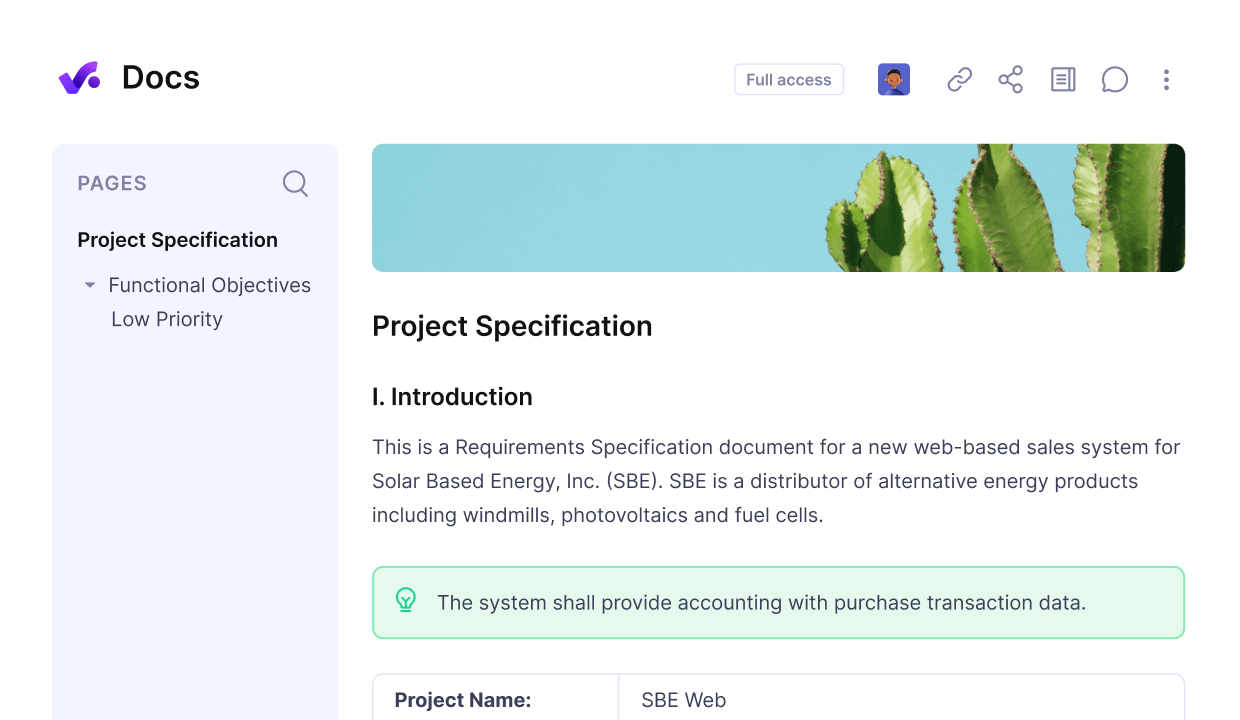
Keep all project documentation in a shared workspace.
Use Project Management and CRM Tools
CRM tools are the systems you use to carry out your stakeholder collaboration strategy consistently. Their role is to help you stay organized, track progress, and avoid dropping the ball when project complexity increases.
These tools cover day-to-day execution, not just planning. For example:
- Stakeholder registers: Centralized lists of contacts and influence levels.
- Mapping tools: Diagrams or grids to visualize stakeholder relationships.
- Survey software: To capture feedback at scale.
- Collaboration platforms: Like Notion, or Productive (to assign actions and track updates).
To save you research time, we’ve made a detailed list of the best project management software with CRM.
Make Evaluation Frameworks
Evaluation frameworks are essential for checking whether your stakeholder interaction strategy is actually working. They turn scattered or anecdotal feedback into structured input that your team can use to make informed changes.
A good framework connects participation, sentiment, and outcomes to specific project goals, allowing you to assess if your approach is effective or needs adjustment.
Your evaluation frameworks should include:
- Satisfaction surveys: Simple scores plus open comments
- Participation data: Meeting attendance, response rates, etc.
- Feedback quality metrics: How useful or actionable the input is
- Lessons learned log: What worked, what didn’t, what to try next time
Wrap this into your end-of-project retrospectives or mid-project reviews. You’ll get better every time.
Final Takeaway
Stakeholder collaboration is about building trust, surfacing risks early, and creating shared accountability. If your team often runs into misalignment, resistance, or late-stage surprises, engagement is probably where things are breaking down.
A clear plan, simple tools, and a mindset focused on genuine participation can fix that.
Productive helps agencies and service businesses stay organized across projects, people, and planning (including who’s involved and how).
Bring clarity to your engagement process, book a short demo, and see how it works.
Increase stakeholder engagement with Productive.
Use live docs, permissions, and automated updates to keep everyone in the loop. Map roles, plan communication, and turn feedback into action – without extra admin.
